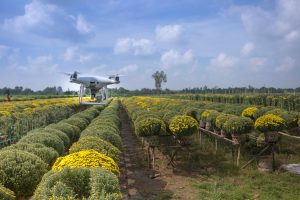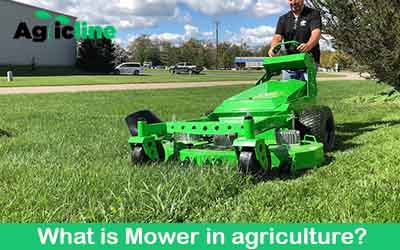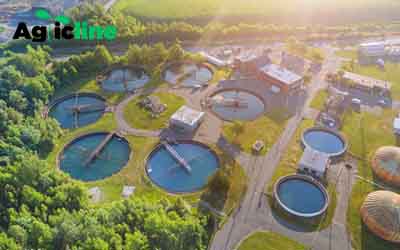Food processing is a critical component of modern society, playing an essential role in determining the availability, convenience, and nutrition of the foods we consume.
Historically, processing techniques like smoking, salting, and drying were fundamental for preserving food, enhancing its shelf life, and ensuring food security during scarce times.
Today, the scope of food processing encompasses a range of sophisticated techniques designed not only to preserve food but also to improve its quality, safety, and nutritional value.
The Role of Food Processing in Modern Diets
The importance of food processing in modern diets cannot be overstated. By converting raw ingredients into ready-to-eat meals or other food products, processing helps in making food consumption more convenient and accessible.
This is particularly evident in urban environments where time constraints significantly influence eating habits.
Moreover, food processing can enhance the nutritional profile of products through fortification — adding vitamins and minerals to support better health outcomes.
Emerging Technologies Revolutionizing the Industry
In recent years, the food processing industry has witnessed a surge of innovative technologies that are set to redefine traditional methods.
Automation and robotics have streamlined production processes, increasing efficiency and reducing human error.
Artificial intelligence (AI) is being employed to optimize everything from ingredient mixing to temperature controls, ensuring consistent product quality.
Impact on Food Quality, Safety, and Sustainability
Emerging technologies in food processing are profoundly impacting food quality, safety, and sustainability:
- Quality
- Safety
- Sustainability
Current State of Food Processing Technology
The food processing industry has evolved significantly from its early days of basic preservation to a complex array of methods aimed at improving food safety, quality, and convenience.
This evolution is driven by both technological advancements and increasing consumer demands for healthier, more sustainable products.

Traditional Food Processing Methods
The cornerstone of food processing involves traditional methods such as:
- Canning
This method uses heat to kill microorganisms and enzymes that cause food spoilage, sealing the food in airtight containers to extend its shelf life.
- Freezing
Freezing food slows down enzyme activity and microbial growth, preserving food for extended periods without significantly altering its texture or flavor.
- Pasteurization
Primarily used for dairy products and juices, pasteurization involves heating food to a specific temperature for a definite period to destroy pathogens, extending its freshness and safety.
Modern Technological Innovations
In addition to traditional techniques, several modern technologies have been integrated into food processing:
- Vacuum Packaging
This technology removes air from the packaging before sealing it, significantly reducing oxygen levels and slowing down the spoilage process.
- Ultrasonic Processing
Using high-frequency sound waves, this method can be employed for cutting, emulsifying, and modifying the texture of foods without using heat, which helps retain nutritional and sensory properties.
This technique alters the composition of the air surrounding the food in its package, which can extend shelf life and maintain quality.
Challenges in the Food Processing Industry
- Sustainability Issues
- Health Concerns
- Efficiency and Cost
The Road Ahead
As the industry navigates these challenges, the future of food processing looks to more integrated technologies that can provide smarter, more efficient, and environmentally friendly solutions.
The ongoing advancements aim to optimize processes further, reduce the environmental impact, and cater to the evolving preferences of health-conscious consumers.
By continuing to innovate, the food processing sector can significantly enhance the way we preserve, process, and consume food, leading to better outcomes for consumers and the planet alike.
Cutting-Edge Technologies Transforming Food Processing
The food processing industry is undergoing a transformation as it adopts a range of cutting-edge technologies designed to enhance efficiency, improve product quality, and meet stringent safety standards.
These technologies not only address current industry challenges but also pave the way for new possibilities in food production and distribution.
Automation and Robotics
Automation and robotics have become integral in modern food processing plants, handling everything from sorting raw materials to packaging finished products. These technologies offer numerous advantages:
- Increased Efficiency
- Enhanced Precision and Consistency
- Labor Safety and Cost Reduction
Artificial Intelligence (AI)
AI is revolutionizing the food processing industry by optimizing operations and enabling data-driven decision-making.
Key applications include:
- Predictive Maintenance
- Quality Control
- Supply Chain Optimization
Blockchain for Traceability
Blockchain technology offers an immutable ledger for tracking each step of the food supply chain. This transparency is crucial for:
- Enhancing Food Safety: Quick identification and isolation of contamination sources can prevent widespread foodborne illnesses.
- Building Consumer Trust: Consumers are increasingly demanding transparency about the origins and handling of their food. Blockchain helps manufacturers provide this information, boosting consumer confidence.
- Regulatory Compliance: Blockchain simplifies compliance with safety standards and regulations by providing a clear, accessible record of all transactions.
High Pressure Processing (HPP)
HPP is a non-thermal preservation method that uses extremely high pressure to inactivate microbes in food products without the loss of nutrients or flavor that heat-based methods can cause. Its benefits include:
- Extended Shelf Life
- Retention of Nutrients
- Market Differentiation
Pulsed Electric Fields (PEF)
PEF is a non-thermal technology that uses short bursts of high voltage to perforate the membranes of bacteria and other microorganisms. This method is particularly useful for:
- Enhancing Extraction Processes
- Maintaining Quality
- Energy Efficiency

The Role of Nanotechnology in Food Processing
Nanotechnology is a revolutionary field that manipulates matter at the nanoscale, offering groundbreaking applications in various industries, including food processing.
In the food sector, nanotechnology enhances product features, improves food safety, and increases the efficiency of production processes.
Its integration into food processing technologies is poised to transform the industry by providing more precise and efficient methods to enhance food quality, safety, and nutritional value.
Applications of Nanotechnology in Food Processing
- Nano-encapsulation
This technique involves encapsulating nutrients, enzymes, or flavors within nano-sized carriers.
This not only protects sensitive compounds from degradation during processing and storage but also allows for controlled release of flavors or nutrients upon consumption, enhancing the sensory properties and nutritional effectiveness of food products.
- Nano-sensors
These are devices that can detect contaminants and pathogens at incredibly low levels, far surpassing the capabilities of traditional detection methods.
Nano-sensors in packaging can alert consumers and suppliers about the condition of food, ensuring safety and freshness by providing real-time monitoring of microbial growth and spoilage.
- Nanocomposite Materials
Used in packaging, these materials incorporate nanoparticles that improve the mechanical, barrier, and antimicrobial properties of food containers.
This extends the shelf life of perishable items and maintains food quality by providing superior protection against oxygen, moisture, and microbial contamination.
Benefits of Nanotechnology for Food Safety and Nutrient Enhancement
The integration of nanotechnology in food processing presents numerous benefits:
- Enhanced Food Safety
By utilizing nano-sensors and smart packaging technologies, food processors can achieve higher standards of safety and extend the usable life of products.
These innovations significantly reduce the risk of foodborne illnesses and ensure products remain safe for consumption for longer periods.
- Improved Nutrient Delivery
Nano-encapsulation helps in fortifying food with vitamins, minerals, and antioxidants without affecting taste or appearance.
This technology enables the addition of bioactive compounds that can improve health and prevent disease, meeting the growing consumer demand for functional foods.
- Targeted Nutrient Release
Nanotechnology allows for the development of systems that release nutrients at specific times or in targeted locations within the body.
This can enhance the bioavailability and effectiveness of nutrients, making food products not only nourishing but also functional in promoting health and wellness.
The Impact of Biotechnology on Food Processing
Biotechnology has significantly influenced the food processing industry by introducing methods that can modify the genetic makeup of organisms to improve food production efficiency, enhance nutritional content, and reduce environmental impact.
This field encompasses a wide range of techniques, including genetic engineering, fermentation technology, and enzyme technology, each contributing uniquely to the advancements in food processing.
Genetic Engineering
Genetic engineering involves altering the genetic material of plants or animals to achieve desirable traits such as increased resistance to pests and diseases, enhanced nutritional profiles, and better yield.
This technology has led to the development of genetically modified organisms (GMOs), which are now integral in the production of many food products.
- Improved Crop Varieties
- Enhanced Nutritional Content
- Drought and Salinity Resistance
Fermentation Technology
Fermentation has been used for centuries to process food and beverages. Modern biotechnological advances have enhanced this process, allowing for greater control over the fermentation environment and resulting in more consistent and novel products.
- Development of Functional Foods
Fermented foods can be engineered to have probiotic properties, supporting digestive health and enhancing immune function.
- Sustainable Protein Sources
Techniques such as solid-state fermentation are being used to produce protein-rich foods from non-traditional sources, such as single-cell proteins from yeasts and fungi, providing alternatives to animal-based proteins.
Enzyme Technology
Enzymes are used in food processing to catalyze biochemical reactions that can improve food quality, texture, and flavor. Biotechnology has enabled the optimization of enzyme use in several ways:
- Enhanced Flavor and Texture
Enzymes are used in cheese production, meat tenderization, and the clarification of beer and wine, improving the quality and consistency of these products.
- Increased Shelf Life
Enzymes can be used to prevent spoilage and extend the shelf life of food products by breaking down undesirable components.
- Efficiency in Processing
Enzymatic processes often occur at lower temperatures and pressures than chemical processes, reducing energy consumption and processing costs.
Sustainability and Environmental Considerations
As global awareness of environmental issues continues to grow, the food processing industry faces increasing pressure to adopt sustainable practices.
This shift not only responds to consumer demand but also aligns with global efforts to reduce environmental impacts and promote sustainability in food production.
Reducing Environmental Footprint
The integration of new technologies in food processing has significantly contributed to reducing the industry’s environmental footprint:
- Energy Efficiency
- Water Conservation
- Waste Reduction
Sustainable Packaging Solutions
Packaging plays a crucial role in preserving the quality and safety of food products, but it also contributes significantly to environmental pollution. The industry is shifting towards more sustainable packaging options:
- Biodegradable and Compostable Materials
Development of packaging from natural or rapidly renewable resources, such as plant-based plastics and biodegradable films, offers a solution that reduces long-term waste without compromising food safety or quality.
- Recycling and Reusability
Emphasizing recyclable materials and designing for easier disassembly at the end of life helps ensure materials can be recovered and reused, lessening the demand for virgin materials and reducing the overall environmental impact.
- Reduction in Packaging
Minimizing the use of packaging material without compromising product integrity is another effective strategy.
This not only reduces waste but also decreases the carbon footprint associated with the production and disposal of packaging materials.
Future Trends and Predictions in Food Processing Technology
As we look towards the future, the food processing industry is set to undergo even more transformative changes.
Driven by technological advancements, shifting consumer preferences, and global sustainability goals, these changes will likely reshape the landscape of food production and consumption.
Here are some of the key trends and predictions expected to influence the food processing sector in the coming years.
- Advanced Automation and AI
Automation will continue to expand beyond simple tasks to more complex decision-making processes within food production.
Artificial intelligence will increasingly be used to optimize supply chains, predict market trends, and personalize nutrition based on genetic profiles.
- Smart Factories
The concept of smart factories in food processing is gaining traction. These facilities, powered by the Internet of Things (IoT) and AI, can monitor and adjust processing conditions in real-time to maximize efficiency and minimize waste.
- Synthetic Biology
This emerging field could revolutionize food processing by creating new ingredients and flavors through genetically engineered organisms, offering unprecedented control over food properties and nutrition.
- Demand for Transparency and Traceability
Consumers will continue to demand more information about how their food is sourced, processed, and delivered.
- Personalized Nutrition
As understanding of the human genome and microbiome advances, so too will the ability to tailor food products to individual health needs and preferences.
- Circular Economy Practices
The food processing industry will adopt more circular-economy practices, where waste products are repurposed for new uses, dramatically reducing environmental impact and increasing operational efficiency.
- Energy-efficient Technologies
New processing technologies that use less energy and produce fewer emissions will be critical as the industry seeks to comply with international climate goals and regulations.
- Stricter Regulations
As technology evolves, so too will the regulatory landscape to ensure food safety and ethical considerations are met.
This could include more stringent labeling requirements and standards for emerging products like lab-grown meat and genetically modified organisms.
- Ethical Production
There will be an increased focus on the ethical implications of new technologies, including the welfare of animals in traditional agriculture and the socioeconomic impacts of shifting towards highly automated food production systems.
Concluding remark on food processing technology
The future success of the food processing industry hinges on its ability to continue innovating and adapting to changing conditions.
As environmental concerns and consumer preferences evolve, so must the technologies and practices within the industry.
The integration of sustainability into every facet of food processing—from sourcing to manufacturing to distribution—is essential.
The food processing industry stands at a sensitive point, with the power to influence global food security, environmental sustainability, and public health.
Recommendations
How to get a loan to start a cattle farm
How to start a small farm with animals
Best Water management technology in agriculture



